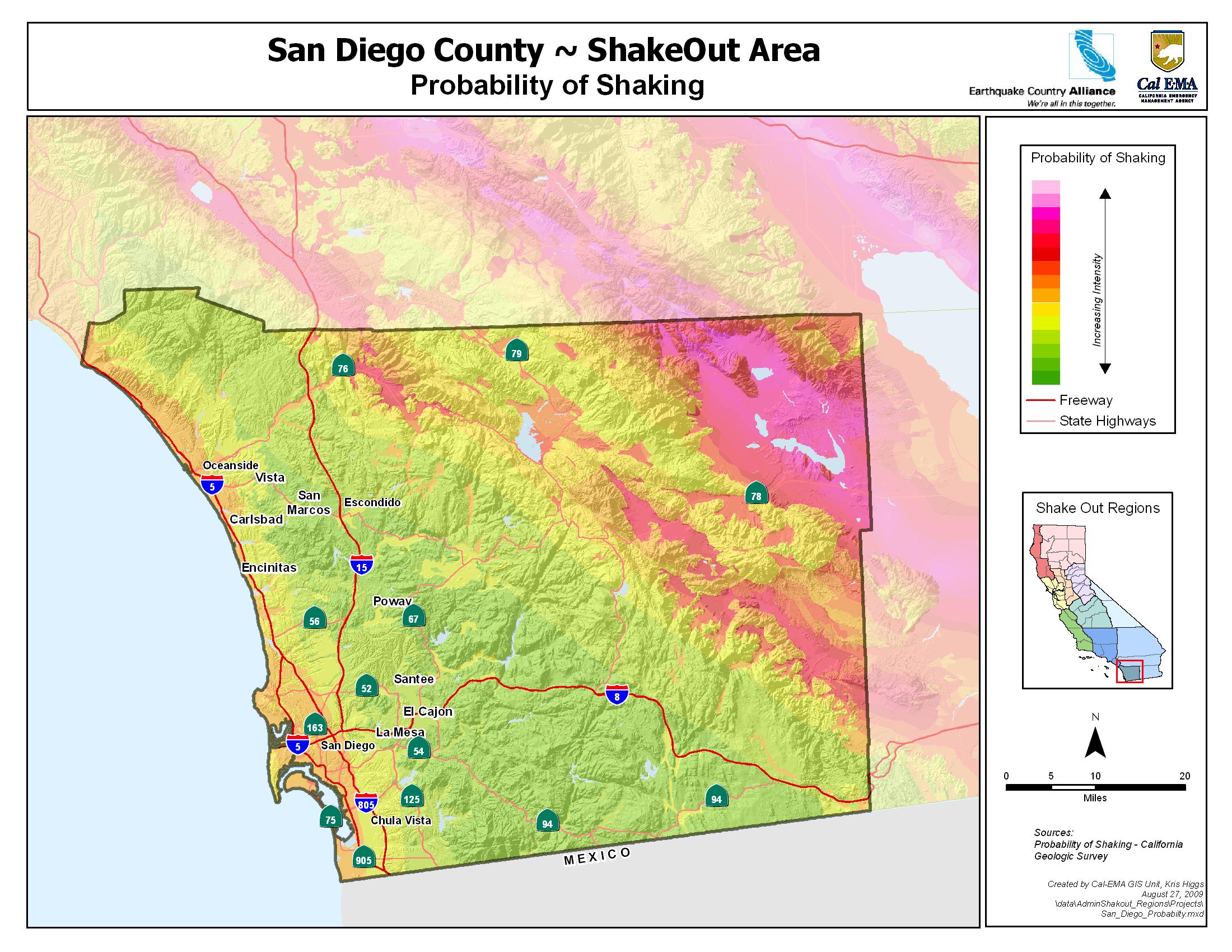Understanding the San Diego Earthquake: Preparedness and Response
San Diego, a beautiful coastal city known for its sunny weather and vibrant culture, is also susceptible to natural disasters, one of which is earthquakes. Understanding the risks associated with a San Diego earthquake is crucial for residents, businesses, and local authorities alike. This blog post aims to shed light on the seismic activity in the San Diego region, the appropriate preparedness measures, and the response strategies necessary to navigate such events.
Seismic Activity in San Diego
San Diego is located in a seismically active zone influenced by the tectonic activity of the Pacific and North American plates. According to the ShakeOut website, the region experiences numerous small earthquakes annually, with larger and more damaging earthquakes possible in the future.
Historically, San Diego has experienced significant earthquakes, with the 1933 Long Beach earthquake being one of the most notable, affecting the Southern California area profoundly. Today, advancements in seismology and technology have improved our understanding of the earthquake risks specific to San Diego.
Preparedness: Essential Steps for Individuals and Businesses
Preparation is key to minimizing risks associated with earthquakes. Here are critical steps that individuals and businesses in San Diego can take:
- Create an Emergency Plan: Develop a disaster response plan that includes evacuation routes, communication strategies, and emergency contacts. Make sure all family members understand the plan and conduct regular drills.
- Build an Emergency Kit: Prepare an emergency kit that contains essential items, such as water, non-perishable food, first-aid supplies, flashlight, batteries, and important documents.
- Secure Heavy Items: Fasten heavy furniture, appliances, and electronics to walls to prevent tipping or falling during an earthquake.
- Stay Informed: Sign up for local alerts and familiarize yourself with available resources, including local emergency services and community support.
Business Continuity Planning
For businesses, the impact of a San Diego earthquake can be far-reaching, affecting operations, employee safety, and customer trust. Implementing a robust business continuity plan is essential. Here are some key considerations:
- Conduct a Risk Assessment: Analyze vulnerabilities within your business operation and develop strategies to address them. This might include insurance coverage and contingency plans.
- Employee Training: Ensure employees are trained in earthquake response procedures and know their roles during an emergency. Regular training sessions can help keep safety protocols fresh in everyone’s mind.
- Utilize Technology for Automation: Leverage tools like n8n workflows to automate parts of your disaster recovery processes. Automation can streamline communication and data backups, enhancing resilience.
Emergency Response and Recovery
In the wake of an earthquake, immediate response measures are critical. The city of San Diego, alongside other regional agencies, has established response protocols to deal with the aftermath of seismic events.
- Identify Strong Communication Channels: Effective communication is vital during emergencies. Utilize multiple platforms (social media, SMS alerts, local news) to disseminate information quickly.
- Cooperate with Local Authorities: Stay updated with information released by the San Diego Fire-Rescue Department and emergency services. These organizations provide real-time updates and safety instructions.
- Assess Structural Safety: Post-earthquake, ensure buildings and infrastructure are evaluated for safety. Engaging with structural engineers can help make rapid assessments of damage.
Building a Resilient Community
Earthquake preparedness is not only an individual concern; it is a community responsibility. Collaboration among residents, businesses, and local government can significantly enhance San Diego’s resilience to earthquakes. Here are ways to build community strength:
- Community Training Programs: Organize workshops or seminars that educate community members about earthquake preparedness and response.
- Develop Partnerships: Encourage partnerships with local organizations, schools, and businesses to share resources and information regarding preparedness.
- Participate in Drills: Engage in community-wide earthquake drills to ensure everyone knows the procedures and maintains readiness.
Conclusion
Understanding the risks of a San Diego earthquake and preparing adequately is critical for both individuals and businesses. By taking proactive steps and fostering a culture of preparedness within the community, San Diego can significantly mitigate the impact of potential seismic events. For more information on earthquake hazards specific to San Diego, refer to resources like the ShakeOut website. Together, let’s build a safer and more resilient San Diego!






